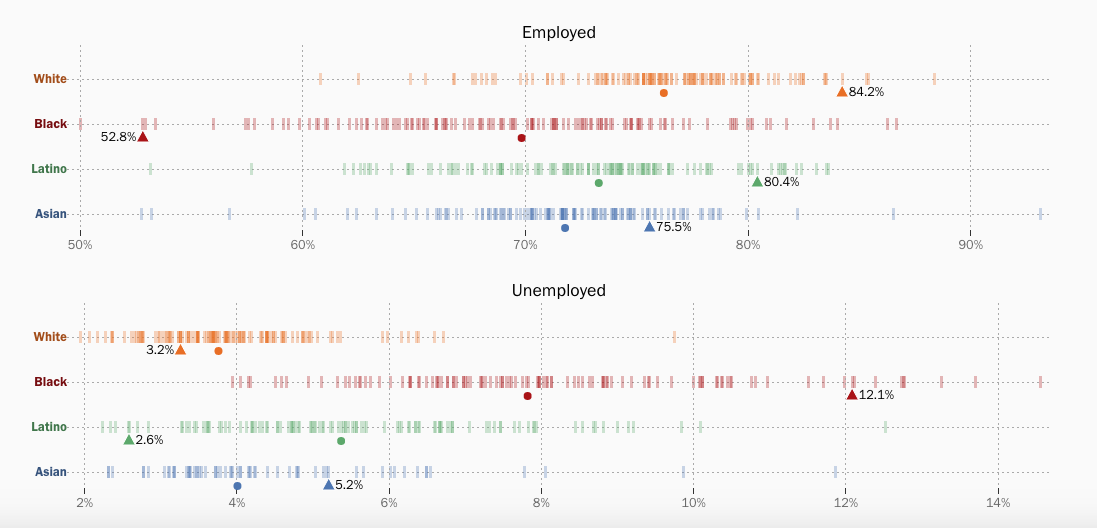
San Francisco may no longer be one of the nation's top-ranked cities for income disparity, but a study released last week by the Brookings Institution painted a stark picture of the job landscape for black San Franciscans, as compared to the city as a whole.
The study, a comparative index of employment among 18-to-64-year-olds in localities with more than 500,000 people, indexed the highest and lowest national employment rates by region, and then compared employment rates in those same regions by race—white, black, Latino and Asian.
While San Francisco has the ninth-highest general employment rate in the country (79 percent), it also has the highest employment disparity between blacks and whites in the country.
84 percent of white San Franciscans are employed, compared to 53 percent of black San Franciscans.

The only area with a lower percentage of employed working-age black people than San Francisco was Detroit—which has an employment rate for blacks of 50 percent. However, Detroit's general employment rate is 51 percent, meaning that the racial disparity for blacks is essentially nil.
The numbers are especially striking because only 4 percent of San Franciscans in 2015 were black—a number that's been declining for decades.
The only other national city with a black-to-white employment disparity that rivaled San Francisco's was Chicago, with a 27 percent spread (83 to 56 percent white-to-black).
Employment rates for Asian and Latino residents in San Francisco didn't rank in the highest or lowest 15 nationally, according to the report.
The takeaway, the study's authors said, was that "positive top-line employment numbers at the national or regional levels do not tell the whole story." They called for the urgency of "complex, long-term work of devising and delivering more inclusive economic growth strategies."









